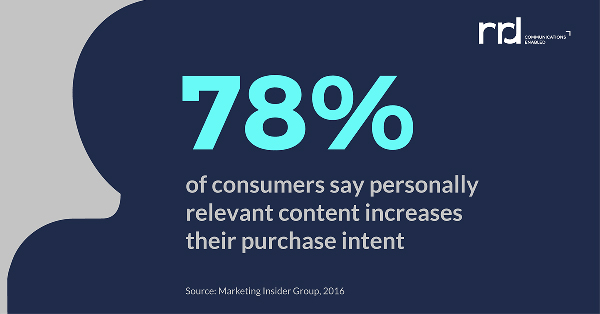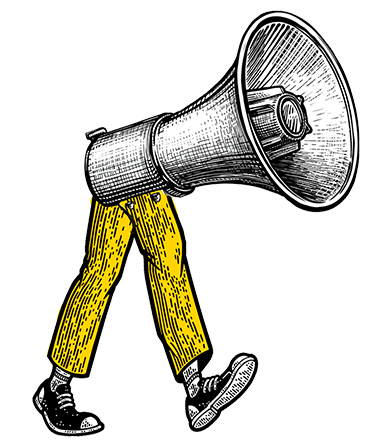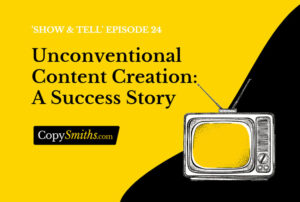Home » Content Marketing » How Writing Outlines Can Help Your Team Create Better Content

How Writing Outlines Can Help Your Team Create Better Content
Is your content marketing bringing you results?
To be effective, content marketing needs to evolve together with online audiences. You need to cater to your audience’s needs as it’s getting hungrier for high-quality content.
But high-quality content is hard to come by and even harder to create.
Yet, the simple act of writing an outline can help you create better content.
Join us today as we explore the benefits of writing outlines.
How Writing Outlines Benefits Your Content Creation
According to Demand Metric’s Benchmark Study, a whopping 41% of marketers report unsatisfactory content marketing results. And what do they report as their most difficult challenges?
Poor user engagement and insufficient content quality.

Image: courtesy
This makes sense. Online readers couldn’t care less about your less than satisfactory content. This is how you end up with no clicks, no engagement, no sales.
So, before you turn a profit, you need to provide your audience with top-shelf content.
Your shortcut is writing outlines.
Because this is where all the hard work is done. This is where you build article flow that takes your reader on a journey. It’s where you discover ways to get the readers’ attention and keep it from beginning to end.
Most importantly, your outline is where you think about your content quality.
As reported by Katrina McKinnon, a content marketer with 20+ years of experience:
“Over the last couple of years, I have learned that when a writer creates an outline first the article always ends up being better. With an outline the writer has to think about user intent, audience, client CTA, points they’ll make etc. Planning your work first always leads to a better outcome.”
Today, we bring you the benefits of writing outlines for your blog posts.
1: Increases Content Relevance
We don’t have to tell you to steer clear of generic content. You already know that’s a huge turn-off for readers.
The folks over at Growandconvert.com have a short and sweet hint for you: get specific with your topics.
Relevant, value-added content gets people coming back for more.
Blogs that understand this technique are rewarded by plenty of traffic and tons of engagement.
“What keeps visitors and readers coming back to your blog? It’s value, of course. No, it’s not just value, it’s tons and tons of incredible and to die for value. You’ve heard the phrase, “Always over-deliver on the value”, just find ways to keep giving!”
— Source: Magnet4blogging.net
And it gets better. A 2016 study reveals that relevant content increases people’s purchase intent.

Image: courtesy
But how do you offer relevant content to your reader?
By plotting it out in your outline stage.
Think about how to include information that is relevant to your readers.
To help you do this, here are some concepts worth noting when writing your outline:
- Target your content to readers with different experience levels. Make sure you have all your potential prospects in mind when creating content. Ensure your blog posts cover different levels of knowledge, from beginner to advanced.
- Segment your audience. Create email-gated eBooks personalized for different audience segments. Create theme-based content that targets the specific needs of those audiences. Yes, you’ll have to bear with the downside of excluding some fractions of your audience. But that’s how to derive the benefits of providing personalized content.
- Give context to your content. Keep track of any mundane commonalities that affect the lives of your readers. For example, keep seasons, sporting events and holidays on your radar. Think of anything that affects your readership. This will strengthen your brand and help you build rapport with your audience.
2: Helps You Stay on Target Concerning the Readers’ Buying Stage
Your job as a content marketer is to target readers in different stages of their buying cycle.
It’s equally important for your writers to know which stage they’re targeting. Because it’s the only way they can align their writing (and their outline) to this target.
This helps writers build personalized content experiences across the customer journey.
- Early stage. Buyers are starting to collect information about a certain issue they have.
- Middle stage. Buyers are transitioning from the awareness stage to the evaluation stage. Here’s where they start forming a decision whether your product or service is a good fit for them or not.
- Late stage. Buyers have enough information about the solution and are considering making a purchase.
Creating an outline with this in mind will improve your content creation. It improves the chances your content will match what your readers are looking for.
For example, a writer can adjust their CTAs to match a reader’s intent in the late stage of the buying journey. They can also make extra effort to entice sales in a piece of content that targets these readers.
3: Adds Credibility to Your Content
Writing a blog post outline can add credibility to your writing in more ways than one. Structuring your content before throwing yourself into writing allows for a better flow.
Your content quality improves because you sequence your points so they make sense to the reader. By planning it ahead, you’re creating conditions for content that’s able to compete for attention.
In the highly saturated blogging market, the audience is getting spoiled for choice. This raises the benchmark of what quality content is. People want well-researched, credible content.
So, it’s a good idea to plant some credibility signals into your content while you’re crafting an outline:
- Make sure to back up your assertions with data from authority sources.
- Grab any quotes, examples or links relevant to the topic at hand.
- Jot down any ideas you have for visual content. Think charts, graphs, informational graphics, etc.
Dropping any relevant links into your outline makes it easy to come back to them later in the writing stage.
Here’s an outline example from our writing team. It’s an outline for an article about protecting employees against workplace accidents.

Source: Basecamp
4: Helps You Craft an Effective CTA
Finally, a prewriting stage is a great point to start thinking about your CTA.
As seen in the sections above, your outlines should help you walk the reader through the sales funnel. And your CTA is the gate your readers take between the stages.
It stands to reason a writer needs to know where it is that they’re taking their audience.
Let’s say you’re writing a blog post on a top funnel topic. It makes sense to use a middle funnel offer as your CTA. Here’s where you’ll typically link out to a product guide or a case study to show how your product has helped others.
Or let’s say you’re creating content around a middle funnel topic, one that tackles your products and services in more detail. This is where you’ll pitch a bottom funnel offer in your CTA (e.g., “book a free demo”, ”work with us”).
Of course, you don’t have to flesh out your conclusion at this point. Just jot down a few lines that give your CTA direction. You don’t want to send your reader back up your sales funnel, right?
Know What It Takes to Create Better Content
To put it simply, the benefits of writing outlines outweigh the costs. We hope this article has done its share to support this claim.
Your input in the outlining stage results in content that takes the reader through the buyer journey.
CopySmiths
I'm Katrina McKinnon, founder of CopySmiths and Small Revolution. In my 20 years of experience, I have helped online businesses create high-performing content specifically on an eCommerce store's blog. Find me on LinkedIn and Twitter.

CopySmiths offers the best blog writing services for online stores.
If you'd like us to write blog articles for you, click here.
Most Recent
- 3 Bold Questions You Should Ask When Hiring A Content Writer

- 5 Practical Reasons You Should Use a Blog Post Template

- 4 Amazing Benefits of Using a Title Generator for New eCommerce Blogs

- 10 Awesome Bio Examples Your Online Store Blog Should Emulate

- 8 Basic Steps to Successful Content Development Every Time

Podcasts
Got a question?
Ask our friendly team about our article writing services.
Subscribe to CopyZine
Monthly, hand-picked stories of the best in eCommerce Content.




